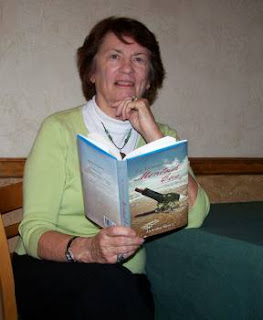
Randy Rawls is a small-town southern boy at heart. Born and raised in Williamston(pop. 3000), a small farming community in North Carolina, Rawls admits that his life was shaped by the values instilled in him as a boy - values like personal responsibility, patriotism and fair play. Add to this an intense love of the written word that was nurtured by the town librarian, and you can understand how this Delray Beach writer came to create Arthur Conan (“Ace”) Edwards , Private Investigator - a character Rawls describes as “a nice guy, not tortured or brilliant, but a man who puts his nose to a problem and doesn’t give up until he finds a solution.”
Rawls spent his career in the army where he retired as a major in 1982 and went to work for the Department of Defense. He credits the military with giving him the opportunity to travel, learn, teach, and “hone the values I inherited from my parents.” A voracious reader who carries a book everywhere – even to bed – Rawls’ love of reading helped him believe he could write. “I learned to write through osmosis,” he explains. “I figured the best way to learn was to read the genre I wanted to write.” He spent a full year immersing himself in first-person PI novels. Then he sat down and started typing. He admits that his first efforts were less than stellar, but he persevered. He joined a critique group and continued to compose and learn. In 2004, his efforts were rewarded with the publication of Jake’s Burn, the first in what would become the six-book Ace Edwards series.
Jake’s Burn tells the story of arson and murder in the small town of Cisco, Texas. Rawls set the book in Texas because he feels a special connection to the state where he lived for two years. He became so fascinated by Cisco’s history that he decided to make it part of the plot. Weaving small-town history into the stories became a trademark of the Ace Edwards novels. “I love history so much that I sometimes get preachy,” Rawls admits. “I work hard to make it an integral part of the story without boring the reader.” Judging from the success of the series, it would seem that Rawls has risen to the challenge.
As much as Rawls enjoyed writing his Ace Edwards books, he decided to try something different for his latest novel. Thorns on Roses is a stand-alone thriller set in south Florida. The story of Tom Jeffries, a Broward County PI who sets out to avenge the gang rape and murder of his best friend’s daughter, is an intense page-turner that examines the thin line between vengeance and justice.
For his newest book, Rawls stretches his literary wings even further “I wanted to see if I could write from a female point of view,” Rawls says. Hot Rocks features Beth Bowman, a south Florida PI who finds herself framed for the murder of a client’s husband. Rawls describes Beth as “tough as nails, but all woman,” and driven by the same small town values as his other protagonists.
Rawls hopes readers will enjoy his stories as much as he enjoys writing them. “I want my readers to be entertained, maybe find a smile or chuckle along the way and finish the book with a good feeling,” he says. “For me, writing is my vocation and avocation. And it’s just plain fun.”
For more information, visit the author’s website at www.randyrawls.com.
Next: John Mackie - He'll Take Manhattan
Next: John Mackie - He'll Take Manhattan













